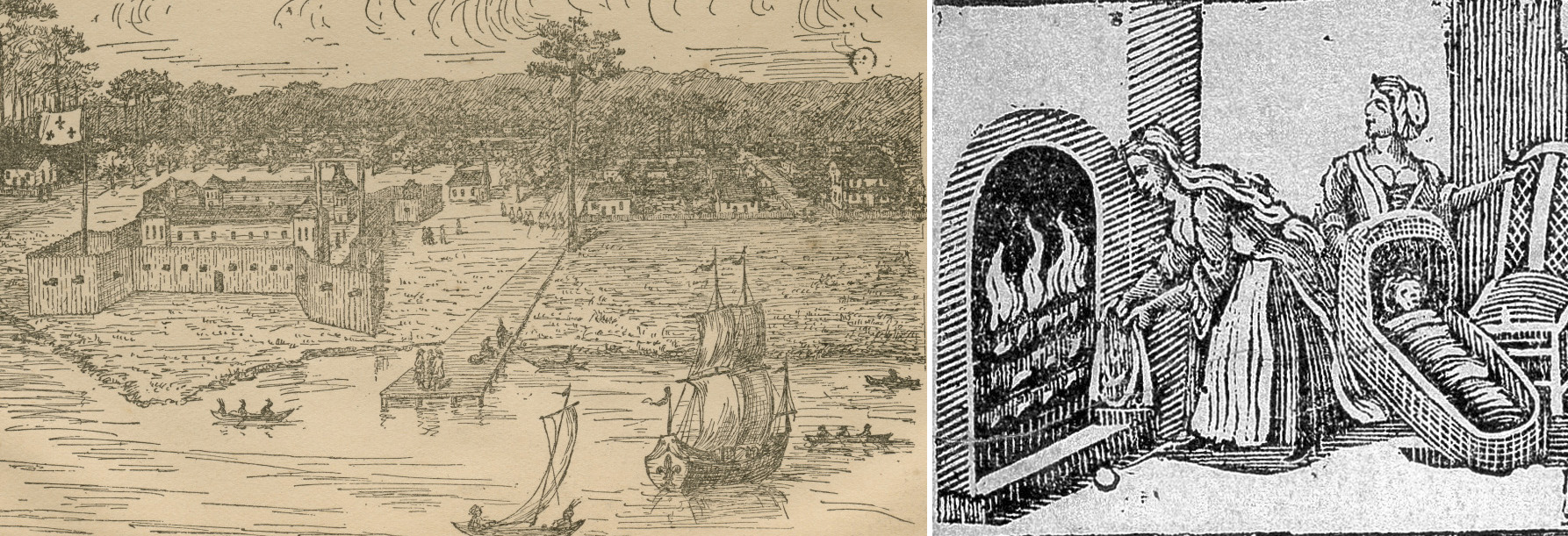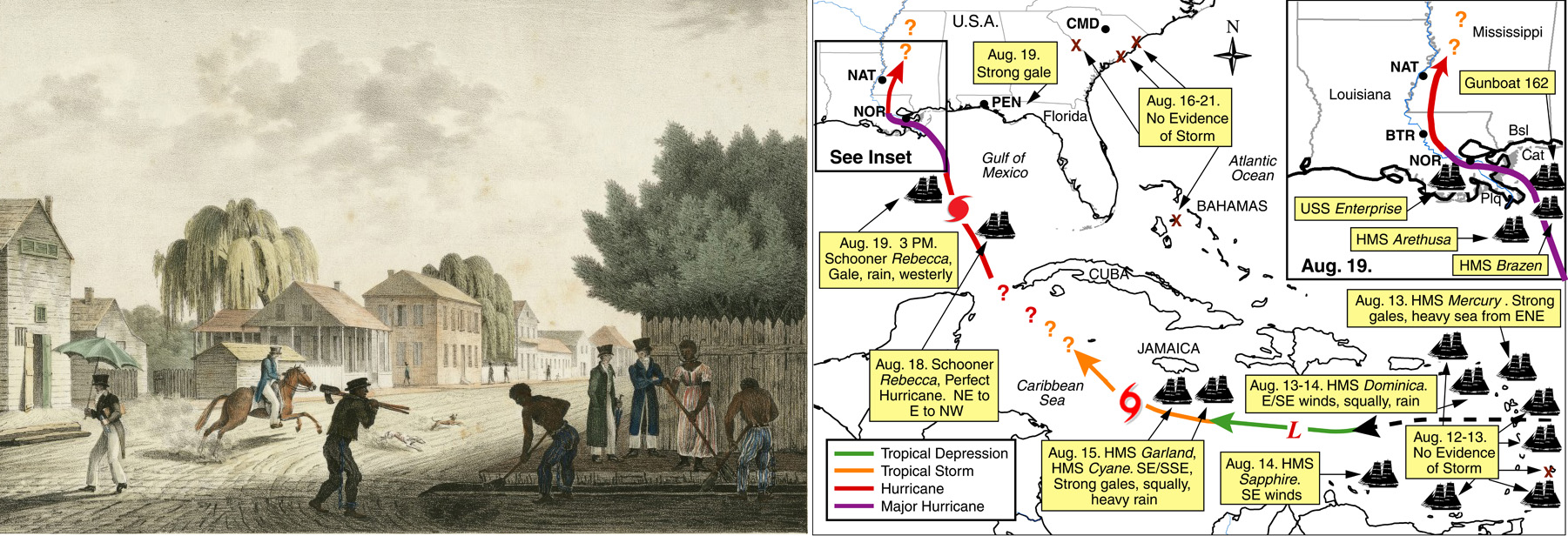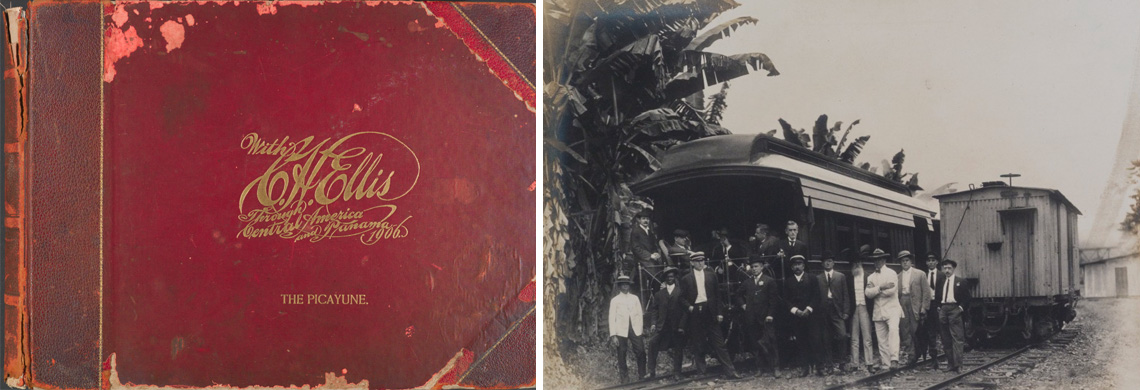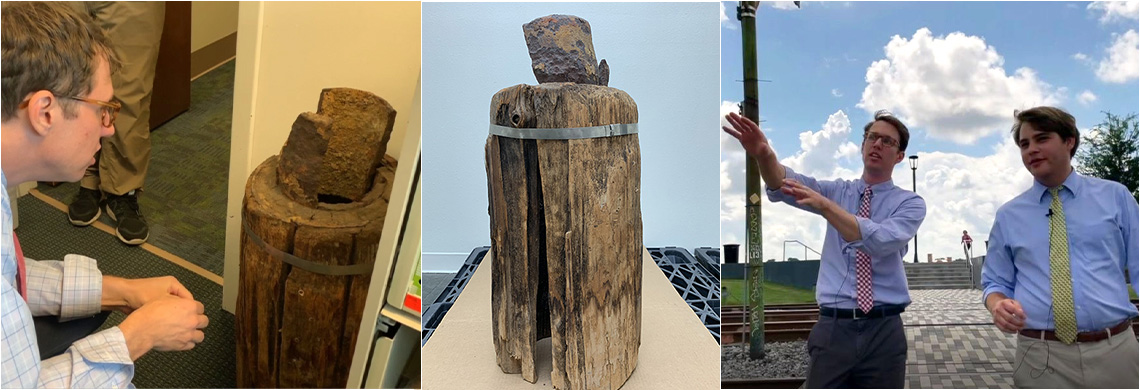Life in the colony of Mobile was precious, so why did Bienville, the de facto ruler, slash the salary of the only Midwife?
In August 1812, a vicious storm ripped through New Orleans. Using a letter from THNOC’s holdings and the findings of a climatologist, we look at the storm’s toll and how it compares to recent hurricanes.
The first case of COVID-19 in Louisiana was diagnosed on March 9, 2020. As part of its efforts to record this transformative period in our region's history, THNOC is sharing the personal stories of three local leaders from the frontline.
A new pumping system in the early 20th century improved New Orleans's drainage crisis, decreased disease rates, increased the quality of the water supply, and drove economic growth throughout the city. These improvements, however, came at a mighty cost.
A large photograph album bound in red leather documents a 1906 “quarantine tour” of Central America sponsored by the United Fruit Company during the final outbreak of yellow fever in New Orleans. The book is a fascinating example of the tremendous influence of the banana-import business in early 20th-century New Orleans and the efforts by one company to skirt quarantine regulations.
In the years after the Civil War, New Orleans was one of the largest, smelliest, and deadliest cities in the United States. The lack of a proper drainage system exacerbated health concerns that arose from yellow fever epidemics.
This 18th-century tool is an ancestor of the waffle iron, but it tells a much wider story—of religion, foodways, and female enterprise.
As New Orleans reels under the global outbreak of the new coronavirus, lessons from a 100-year-old pandemic have come back with a new urgency.
Here in New Orleans, which has one of the highest concentrations of COVID-19 cases in the country, we are adjusting to this new reality of life during a pandemic. This is how we're documenting it.
A month ago, we wrote an article about THNOC’s acquisition of an iron pipe long buried beneath Bourbon Street. It quickly became the most popular story we have posted, so we thought our readers might enjoy hearing about another recently acquired piece of antiquated infrastructure—an original city water pipe made out of cypress wood. That’s right: wood.





















